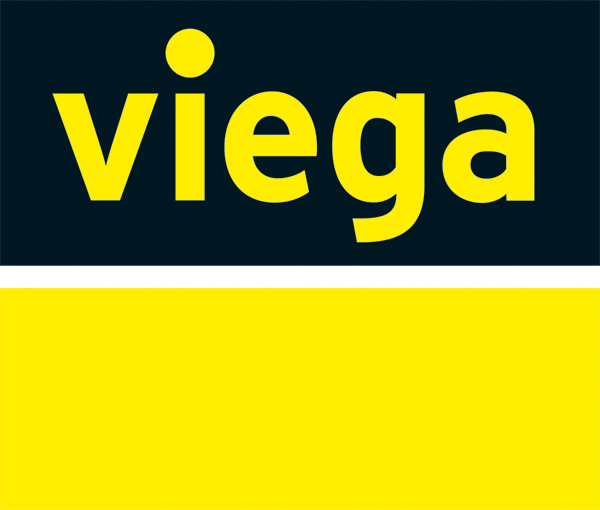Following solid revenue growth in 2013, the majority of U.S.-based engineering and engineering/architecture (EA) firms expect more of the same this year, according to BD+C’s 2014 Giants 300 report. Of the 68 engineering and EA firms that reported a forecast for 2014, 56 companies expect revenue to be higher, with the average growth rate at nearly double digits (9.1%). The same group saw revenue increase 16% on average in 2013.
As the green building movement shifts focus from the new construction sector to existing buildings, engineering firms are well positioned to capitalize on the influx of dollars heading into the reconstruction and retrofit markets. Firms, in turn, are adding services like commissioning (BECx, Cx, and RCx), energy retrofit design, energy auditing, energy modeling, and facilities management consulting in an effort to cater to this growing segment.
San Francisco-based Mazzetti is seeing growth from its recently launched facilities management consulting business, especially on the East Coast. The firm works directly with building owners and their facilities teams to assess how their facilities can operate more efficiently. Mazzetti also advises owners on the best ROI in terms of equipment replacement or repair.
TOP ENGINEERING FIRMS
2013 Engineering Revenue ($)
1 Fluor Corporation $585,150,000
2 Arup 136,464,506
3 Day & Zimmermann 130,576,072
4 WSP Group 124,400,000
5 Affiliated Engineers 104,121,000
6 KPFF Consulting Engineers 94,025,000
7 Syska Hennessy Group 93,902,508
8 Vanderweil Engineers 80,334,000
9 Simpson Gumpertz & Heger 71,640,000
10 AKF Group 67,487,000
SEE FULL LIST
TOP ENGINEERING/ARCHITECTURE FIRMS
2013 EA Revenue ($)
1 Jacobs $3,684,260,000
2 AECOM Technology Corp. 1,769,120,000
3 Parsons Brinckerhoff 316,350,284
4 URS Corp. 280,333,336
5 Burns & McDonnell 160,922,332
6 Thornton Tomasetti 145,038,225
7 SSOE Group 114,501,762
8 CRB 96,860,000
9 Wiss, Janney, Elstner Associates 88,887,000
10 Dewberry 78,770,181
SEE FULL LIST
“We often grow this relationship into more of a capital planning consultant role,” says Walt Vernon, PE, LEED AP, EDAC, Principal and CEO of Mazzetti. “The results are that we have significantly grown our Nashville office, because we’ve increased our work. We’ve hired specialists in this area, which creates a new service line for us.”
Giants 300 coverage of Engineering Firms brought to you by Viega www.viega.us
For TLC Engineering for Architecture, increased emphasis on energy and water services, especially energy audits, is paying dividends. The firm has dedicated staff in each operating unit to focus on these services, with huge success, according to the firm’s CEO and Chairman, Debra A. Lupton, AIA, LEED AP BD+C.
Seeing a growth in demand for water design services, Magnusson Klemencic Associates developed its proprietary Strategic Water Planning tool (http://tinyurl.com/MKAwater) to aid in the assessment and optimization of a project’s global water supplies and demands. The tool takes into account the characteristics of a project—including the site, building type, size, and location—to provide a comprehensive, holistic, and accessible picture of water inputs and outputs, such as stormwater runoff, precipitation, wastewater, evaporation, potable water, and ground infiltration.
The firm has utilized the tool to develop net-zero-water design schemes for several projects, including the Sylvan Theatre at the base of the Washington Monument in Washington D.C.
BIM/VDC/IPD GROWTH
Advanced project modeling and team collaboration continue to play a vital role on engineering projects. More than three-quarters (76%) of the engineering firms that participated in the Giants 300 survey reported at least some design revenue from BIM/VDC-driven building projects. These firms report that, on average, 47% of their total design billings in 2013 were derived from BIM/VDC-driven projects.
Several firms reported innovations in this area:
HNTB has developed a BIM workflow that allows its aviation clients to quickly transfer both geometric and non-geometric data from a project’s BIM model directly into their facility management system, like Tivoli Maximo Asset Management. The process was employed most recently on the Denver International Airport’s Hotel and Transit Center Program. The facilities team plans to use the BIM data for ongoing operations and maintenance management, as well as feasibility studies and planning for future projects on the site.
The firm’s sports practice launched a fully parametric design tool that replaces its 2D bowl and sightline design program. The new tool allows for fast, dynamic design iteration in a 3D BIM environment.
Thornton Tomasetti, through its Core Studio computational modeling and R&D group, has developed dozens of breakthrough engineering design and analysis tools, including a cloud-based, rapid-iterative design program (see BIM Giants section, page 54), building performance analysis software, and a series of custom plug-ins for commercially available BIM/VDC/CAD tools. Custom plug-ins include a parameter explorer, a suite of automated drawing production tools, and programs that check and improve the accuracy and quality of BIM models. Core Studio also builds physical prototypes using its in-house 3D printer.
Robins & Morton is carving out a niche in the emerging integrated project delivery (IPD) field. The construction and engineering giant has worked on four pure IPD projects with multi-party agreements—including the Alfond Center for Health at MaineGeneral Medical Center in Augusta, Maine, a BD+C 2014 Building Team Award winner—and completed 44 projects utilizing many of the elements and management practices of the IPD approach.
Read BD+C's full 2014 Giants 300 Report
Related Stories
MFPRO+ New Projects | Oct 30, 2024
BIG’s One High Line finally reaches completion in New York City’s West Chelsea neighborhood
One High Line, a luxury residential project spanning a full city block in New York’s West Chelsea neighborhood, reached completion this summer following years of delays related to investor lawsuits.
Urban Planning | Oct 30, 2024
Bridging the gap: How early architect involvement can revolutionize a city’s capital improvement plans
Capital Improvement Plans (CIPs) typically span three to five years and outline future city projects and their costs. While they set the stage, the design and construction of these projects often extend beyond the CIP window, leading to a disconnect between the initial budget and evolving project scope. This can result in financial shortfalls, forcing cities to cut back on critical project features.
MFPRO+ New Projects | Oct 30, 2024
Luxury waterfront tower in Brooklyn features East River and Manhattan skyline views
Leasing recently began for The Dupont, a 41-story luxury rental property along the Brooklyn, N.Y., waterfront. Located within the 22-acre Greenpoint Landing, where it overlooks the newly constructed Newtown Barge Park, the high-rise features East River and Manhattan skyline views along with 20,000 sf of indoor and outdoor communal space.
Libraries | Oct 30, 2024
Reasons to reinvent the Midcentury academic library
DLR Group's Interior Design Leader Gretchen Holy, Assoc. IIDA, shares the idea that a designer's responsibility to embrace a library’s history, respect its past, and create an environment that will serve student populations for the next 100 years.
Resiliency | Oct 29, 2024
Climate change degrades buildings slowly but steadily
While natural disasters such as hurricanes and wildfires can destroy buildings in minutes, other factors exacerbated by climate change degrade buildings more slowly but still cause costly damage.
Office Buildings | Oct 29, 2024
Editorial call for Office Building project case studies
BD+C editors are looking to feature a roundup of office building projects for 2024, including office-to-residential conversions. Deadline for submission: December 6, 2024.
Healthcare Facilities | Oct 28, 2024
New surgical tower is largest addition to UNC Health campus in Chapel Hill
Construction on UNC Health’s North Carolina Surgical Hospital, the largest addition to the Chapel Hill campus since it was built in 1952, was recently completed. The seven-story, 375,000-sf structure houses 26 operating rooms, four of which are hybrid size to accommodate additional equipment and technology for newly developed procedures.
Multifamily Housing | Oct 28, 2024
A case for mid-rise: How multifamily housing can reshape our cities
Often referred to as “five-over-ones,” the mid-rise apartment type is typically comprised of five stories of apartments on top of a concrete “podium” of ground-floor retail. The main criticism of the “five-over-one” is that they are often too predictable.
Sports and Recreational Facilities | Oct 24, 2024
Stadium renovation plans unveiled for Boston’s National Women’s Soccer League
A city-owned 75-year-old stadium in Boston’s historic Franklin Park will be renovated for a new National Women’s Soccer League team. The park, designed by Fredrick Law Olmsted in the 1880s, is the home of White Stadium, which was built in 1949 and has since fallen into disrepair.
Laboratories | Oct 23, 2024
From sterile to stimulating: The rise of community-centric life sciences campuses
To distinguish their life sciences campuses, developers are partnering with architectural and design firms to reimagine life sciences facilities as vibrant, welcoming destinations. By emphasizing four key elements—wellness, collaboration, biophilic design, and community integration—they are setting their properties apart.


















